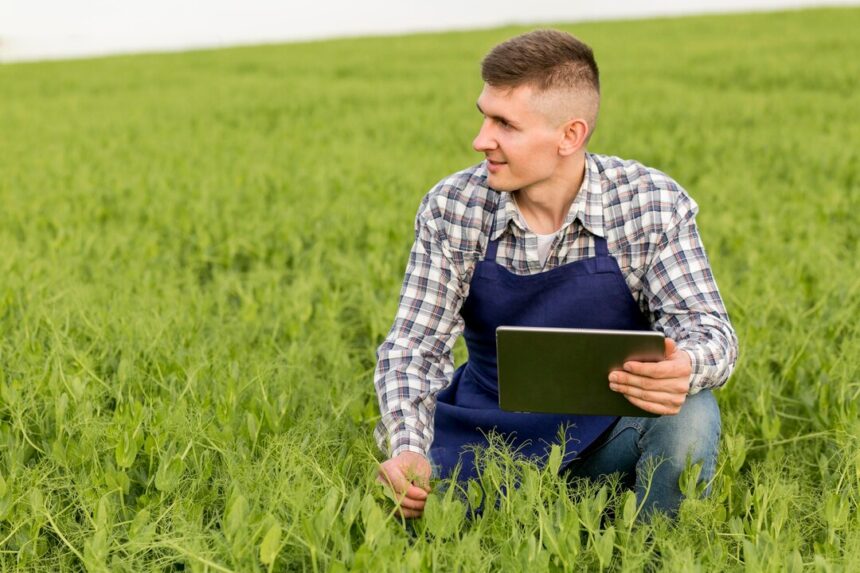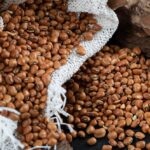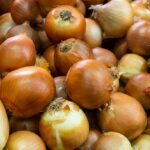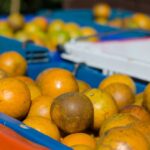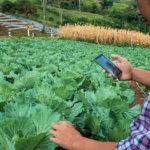Technology is transforming agriculture worldwide, offering farmers innovative solutions to boost efficiency and productivity. In South Africa, where challenges like water scarcity, rising costs, and climate change impact farming, adopting modern technology can make all the difference. Here’s how you can use technology to optimize your farm’s operations.
1. Embrace Precision Agriculture
Precision agriculture involves using technology to monitor and manage crop growth and soil conditions. With tools like GPS mapping, drones, and sensors, farmers can apply resources more effectively.
Benefits:
- Reduce waste by targeting water, fertilizers, and pesticides only where needed.
- Monitor soil health and nutrient levels to optimize crop yields.
Example: Use soil moisture sensors to prevent over-irrigation and conserve water.
2. Invest in Smart Irrigation Systems
Water is a critical resource for South African farmers. Smart irrigation systems, powered by artificial intelligence (AI) and weather forecasts, ensure optimal water usage.
Benefits:
- Save water by adjusting irrigation schedules based on soil moisture and weather conditions.
- Increase yields by providing crops with consistent water levels.
Example: Drip irrigation systems integrated with IoT (Internet of Things) devices monitor and regulate water flow automatically.
3. Use Farm Management Software
Farm management software helps farmers track all aspects of their operations, from planting and harvesting to finances and employee management.
Benefits:
- Simplify record-keeping and improve decision-making.
- Monitor expenses and profitability in real-time.
Example: Tools like Agri SA or CropTracker offer platforms tailored for South African farms.
4. Adopt Drone Technology
Drones are becoming indispensable for modern farmers, providing aerial views of fields for monitoring crop health, pest outbreaks, and irrigation needs.
Benefits:
- Cover large areas quickly and with minimal effort.
- Identify issues like disease or water stress before they spread.
Example: Use drones to capture high-resolution images of your fields for analysis using AI-powered software.
5. Leverage Livestock Monitoring Systems
For livestock farmers, wearable technology such as smart collars or ear tags can track animal health, location, and behavior.
Benefits:
- Detect health issues early to prevent disease outbreaks.
- Improve breeding and feeding strategies.
Example: Systems like CowManager or Moocall help monitor cattle movements and health in real time.
6. Automate Farm Equipment
Automated tractors, planters, and harvesters reduce labor costs and improve operational efficiency. Many of these machines can be programmed to follow precise paths and perform tasks with minimal human intervention.
Benefits:
- Save time and labor costs.
- Increase accuracy in planting and harvesting.
Example: John Deere’s autonomous tractors are designed to perform tasks like tilling or spraying autonomously.
7. Incorporate Green Energy Solutions
Green energy, such as solar panels and wind turbines, can power farm equipment and irrigation systems, reducing reliance on fossil fuels.
Benefits:
- Lower energy costs and reduce environmental impact.
- Ensure reliable power in remote areas.
Example: Solar-powered irrigation pumps are particularly useful for farms in sunny areas like Limpopo or the Northern Cape.
8. Monitor Market Trends with Data Analytics
Market trends and weather patterns significantly affect farming. Data analytics tools help farmers make informed decisions about planting, harvesting, and pricing.
Benefits:
- Avoid overproduction or market saturation.
- Time your harvest to coincide with peak demand.
Example: Use platforms like Grain SA to monitor commodity prices and trends.
9. Improve Logistics with Technology
Efficient transportation and supply chain management ensure that your products reach the market on time and in good condition.
Benefits:
- Reduce post-harvest losses.
- Track shipments in real time.
Example: GPS tracking systems help monitor deliveries and optimize routes to save fuel and time.
10. Utilize Climate-Resilient Technology
Given South Africa’s vulnerability to climate change, investing in climate-resilient technologies is essential. Tools like climate-controlled greenhouses or drought-tolerant seed varieties can help.
Benefits:
- Protect crops from extreme weather events.
- Sustain productivity during adverse conditions.
Example: Greenhouses with automated temperature and humidity controls can optimize growing conditions year-round.
Incorporating technology into your farm’s operations is no longer a luxury but a necessity to remain competitive in today’s agricultural landscape. By leveraging tools like precision agriculture, smart irrigation, and automated equipment, South African farmers can increase efficiency, reduce costs, and boost productivity. Start by assessing your farm’s needs and exploring the technologies best suited to address them. With the right innovations, your farm can thrive in the face of modern challenges.

